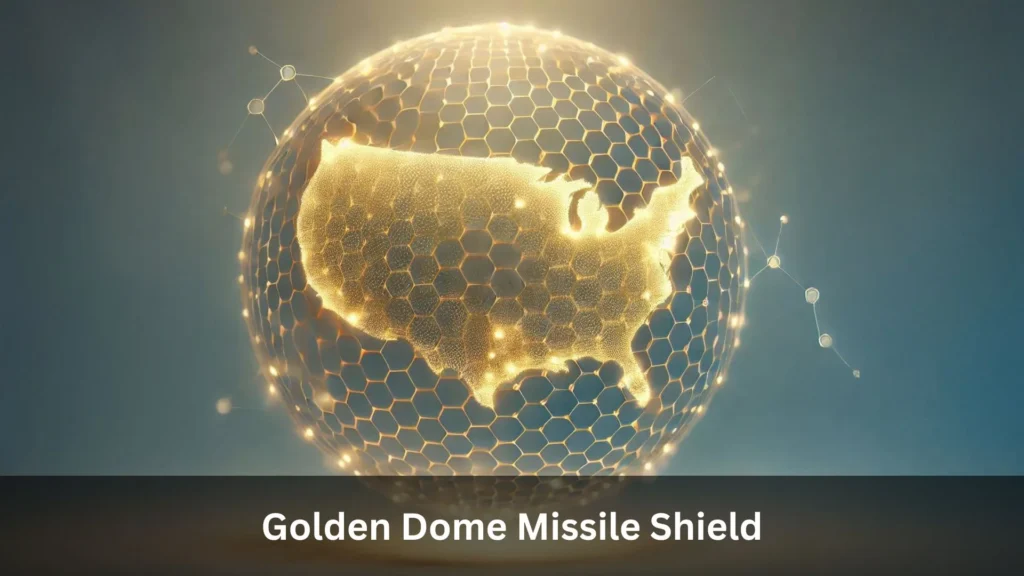Key Takeaways
- Canada in Talks to Join ‘Golden Dome’ Missile Defense System of US, exploring participation in the ambitious project led by the United States to strengthen continental defense against advanced missile threats.
- The Golden Dome is envisioned as a multi-layered defense system targeting advanced threats, including hypersonic and space-launched missiles.
- Discussions between Canadian and U.S. officials signal a deepening of continental security cooperation.
- Experts caution about the massive cost, feasibility, and geopolitical ramifications of such a project.
Introduction
Canada in talks to join ‘Golden Dome’ missile defense system of US signals a major development in North American security cooperation. As global threats become more sophisticated, both nations appear poised to collaborate on an expansive defense architecture designed to detect, intercept, and neutralize advanced missile threats. This initiative could redefine continental defense strategies for years to come.
What is the ‘Golden Dome’?
The ‘Golden Dome’ is an upcoming missile defense initiative led by the United States, aiming to shield the nation from a wide spectrum of aerial threats. Unlike traditional systems, this one is designed to provide full-spectrum coverage by integrating ground-based interceptors, sea-based assets, and space-based sensors.
At its core, the Golden Dome intends to detect and eliminate incoming threats long before they can enter U.S. or allied airspace. The project is expected to cover everything from cruise missiles and intercontinental ballistic missiles to newer, faster, and harder-to-track hypersonic weapons. With a planned multi-tiered structure, it aspires to intercept threats at various stages—boost phase, mid-course, and terminal phase.

Canada’s Interest and Strategic Motives
Canada in talks to join ‘Golden Dome’ missile defense system of US reflects a renewed focus on national and continental security. As part of a shared North American defense perimeter, Canada has long collaborated with the United States through frameworks like NORAD. Participation in this new initiative would elevate that cooperation to unprecedented levels.
While specifics of Canada’s role are still under negotiation, potential contributions could range from financial investment and technological support to hosting radar or interceptor sites. Such involvement would also help modernize Canada’s defense posture in the face of evolving global threats.
For Canada, joining the Golden Dome initiative offers several strategic advantages:
- Enhanced protection against long-range or hypersonic missile threats.
- Deeper integration with U.S. defense infrastructure.
- A proactive role in shaping the future of continental and global defense architecture.
Challenges Ahead
Despite the ambition and scope of the Golden Dome, several concerns have surfaced. The projected cost of the system is immense, potentially reaching hundreds of billions over time. For Canada, this raises questions about financial commitments and returns on investment.
There are also significant technical hurdles. Successfully coordinating land, sea, and space-based components into a single, responsive network will demand cutting-edge innovation, massive coordination, and rigorous testing.
Additionally, critics point out the aggressive timeline for deployment. Establishing such a comprehensive system by the end of the decade might prove overly optimistic, considering the scale of resources and complexity involved.
Geopolitical Considerations
Canada’s diplomatic status on the international scene may be impacted by its potential involvement in the Golden Dome project. By aligning closely with a U.S.-led missile defense initiative, Canada could face pressure from other world powers, particularly those critical of space-based weapons or arms proliferation.
However, proponents argue that proactive defense collaborations are necessary to deter adversaries and protect civilian populations. The system could also catalyze greater technological advancement and create new opportunities in aerospace and defense sectors across North America.
Conclusion
A strategic shift toward deeper continental defense cooperation is highlighted by Canada‘s negotiations to join the US’s “Golden Dome” missile defense system. As missile technologies evolve, so too must the systems designed to stop them. While the project promises enhanced security and advanced capabilities, it also presents financial, technical, and geopolitical challenges that must be carefully weighed.
If the partnership materializes, it could mark a transformative chapter in North American defense—one where Canada takes a central role in building a futuristic, dome-like shield for the skies.


